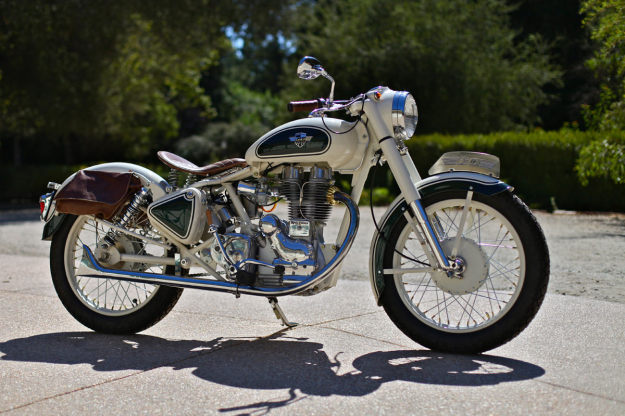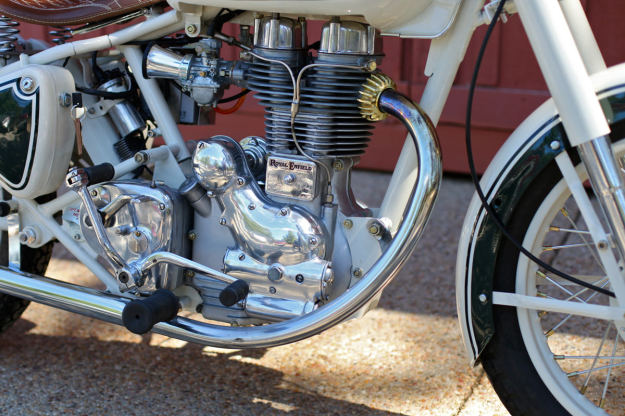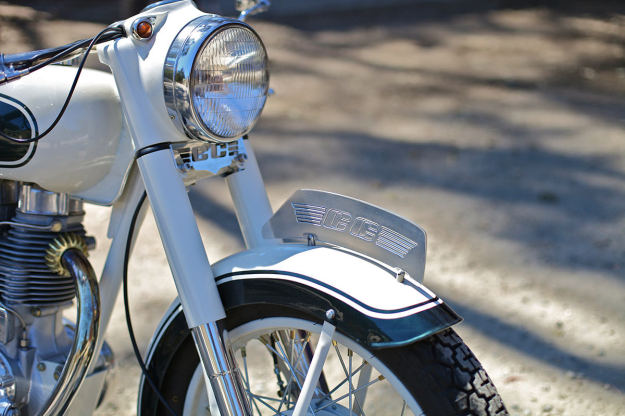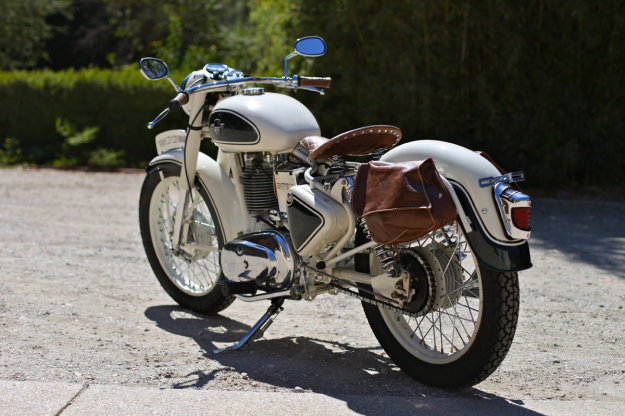
For most pro builders, personal projects usually draw the short straw—relegated to the back of the shop by a steady stream of client work. Just like the “rusted out junk pile” that Californian Chris Chappell picked up a few years ago.
It’s a Royal Enfield Bullet 350, and it did a stint in Chappell Customs‘ front lobby before Chris finally tore into it. But when he did, it was a project free of deadlines, briefs or budgets. “The original plan was to build a radical bobber,” he says. “But with the little 350cc engine, it made more sense to keep it as an upright, fun-to-ride city bike.”

The actual model year of this Enfield is a mystery: the original number plate indicated 1955, but no paperwork was filed prior to 1973. “The VIN numbers on old Enfields really don’t mean much, and there are no good records we can find to verify the year,” says Chris. So, to get the bike on the road, he went with 1973.
Given its age and the state it was in, the Enfield 350 needed a full, bare-bones strip down. Which started with a total rebuild of the engine using all-new, original Royal Enfield parts. A completely new top-end sorted out poor compression—”A combo of a bad cylinder and even worse valves,” Chris reports.

Every nut and bolt on the Enfield was replaced, along with a host of other parts—except for the fuel tank, fenders and toolboxes, which Chris opted to keep. He blasted off the old paint and powder coated them in a creamy Oyster white, along with the frame. (“I left a few small dings here and there.”) Once the powder coating was done, green accents were added and the parts clear coated.

The bike is now roughly five or six inches longer than a stock Bullet 350. “We relocated the rear swingarm, from its original position to what used to be the passenger footpeg area. Our friends at Works Performance made us a custom stainless swingarm bolt with tapered aluminum spacers, to fit the funky taper of the rear foot peg holes.”
Works also supplied a set of longer, dual-rate aluminum shocks to help the Enfield negotiate urban potholes. The rear fender struts were lengthened to fit the new geometry of the rear end.

With the major work out of the way, Chris started poring over the smaller details: a handmade seat, grips and saddle bags in a rich leather with a cream stitch. “Seemed only fitting for a classy look to accent the cream and green color scheme,” he says. “I made the saddle bags myself … that was a first!”
The seat mount is a hand-made part too; Chris CNC-routed a Royal Enfield logo into the aluminum, before mounting the seat on 3” springs. The CNC router was also put to work on the bespoke front number plate and fork badge. All the aluminum bits were then meticulously polished, “to bring back the original luster that was buried under years of oxidization and corrosion.”
The Enfield was then re-wired with updated components—including a smaller regulator and rectifier unit, and a new coil. Chris installed new gauges, lights and a set of “M” bars—with adjustable steering stops to prevent them from connecting with the tank.

Despite the extensive mods, the little 350 is still not quite the perfect ride. “The drum brakes are poor, the right-side shift is odd, and you feel like you’re wide open on the throttle most of the time.”
“But regardless of its lack of power, you somehow feel like you’ve gone back in time. And it’s just fun as hell to ride around. The long, baffled muffler and the sound of the single cylinder thumping along always makes you smile!”
Chappell Customs website | Facebook
